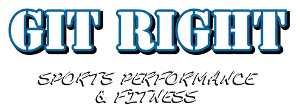Training with pain in your body is a tough situation to be in; however, many people on a daily basis live their lives with this problem. Therefore, people have just tolerated the pain and discomfort while others have found ways to correct the issue and alleviate the pain. There are different causes of pain and today we will look at pain in the legs or lower extremities that may come from issues such as herniated discs. Of course, you must seek medical attention to fully diagnose if you have a herniated disc so as you are reading today, please do not use this as a self-diagnosis tool.
When a disc herniation occurs, the cushion that sits between the spinal vertebrae is pushed outside its normal position which places pressure on the spinal nerves that are very close to the edge of these cushioning discs (Cluett, Jonathan, Herniated Disc, Orthopedics/about.com). The spinal discs are soft cushions that sit between each vertebrae of the spinal column to absorb forces generated on the spinal column like supporting our skeleton. The discs are usually elastic, and overtime as we age, they gradually loose elasticity and become more vulnerable to injury. When the spinal discs become less elastic, the chance of a rupture is greater. The rupture causes a bulge that can pinch the spinal cord and spinal nerves. A few ways a herniated disc may occur are from repetitive straining of the spine or an accident (Cluett, Jonathan, Herniated Disc, Orthopedics/about.com).
A few common symptoms of a herniated disc are electric shock pain, tingling and numbness, and muscle weakness. Electric shock pain comes from pressure on a nerve, for example in the neck area, which sends shocks down to your arms. In your lower back area, the shocks travel down to your legs. Tingling and numbness has a sensation of pins and needles, and it is experienced in the same region as painful electric shock sensations. Muscle weakness is part of the pinching of the nerve and the abnormal signals to and from the brain that interrupt stimulation to the muscle. Without adequate muscle stimulation or nerve innervation, muscle contractions will not function correctly (Cluett, Jonathan, Herniated Disc, Orthopedics/about.com).
Leave it to the expert, your physician, to diagnose if you truly have a herniated disc through physical examinations that test sensation, muscle strength, and reflexes. Your physician can also have a MRI completed to gather additional information. Once your diagnosis is completed, you and your physician will have the best game plan for your success. You may need surgery, rest and activity modifications, ice and heat applications, anti-inflammatory medications and physical therapy (Cluett, Jonathan, Herniated Disc, Orthopedics/about.com).
An important part of the process is physical therapy to assist with stabilizing the spinal muscles, which will decrease the weight-bearing load placed on the disc and vertebrae because of the well balanced back and core muscles that help control the lumbar spine. We have Dr. Andrew Vertson and his staff ready and available to assist you with your physical therapy needs at Biomechanix whom we work directly with to help you design your new training program that is specific to your needs while living life with a herniated disc. We take your back serious and do not program design a one size fits all system that would cause you to have additional disc problems. We would be providing you a disservice if we did that and we don’t want that for you. We only want the best for you, so come in or call today!
